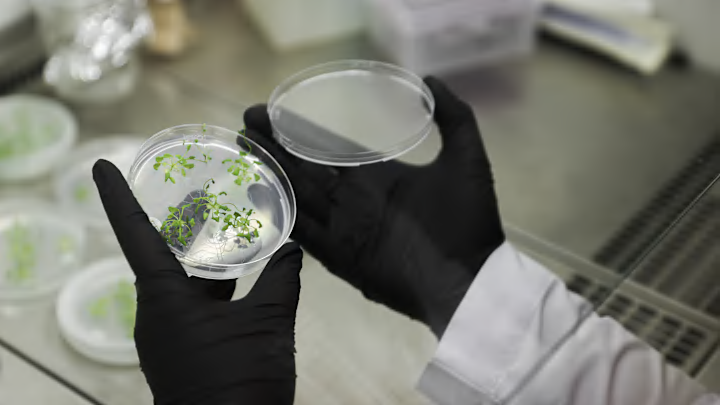The CRISPR Revolution in Agriculture: Improving Crops and Ensuring Food Security

CRISPR-Cas9, known for its applications in biomedical research and gene therapy, is also revolutionizing agriculture by offering precise tools for crop improvement. This gene-editing technology allows scientists to precisely modify the genetic code of plants, enhancing their resilience to environmental stresses, increasing yield potential, and improving nutritional content.
Traditional breeding methods have long been used to improve crop traits such as disease resistance, drought tolerance, and yield. However, these methods are time-consuming and rely on genetic variation within plant species. CRISPR-Cas9 provides a more targeted approach, enabling researchers to edit specific genes responsible for desired traits without introducing foreign DNA.
One of the most significant advantages of CRISPR-Cas9 in agriculture is its potential to accelerate crop breeding programs. By targeting genes associated with traits of interest, such as pest resistance or nutrient uptake, researchers can develop new crop varieties more quickly and efficiently. This is particularly important in the face of climate change and global food security challenges, where resilient and high-yielding crops are essential for sustainable agriculture.
CRISPR-Cas9 is being applied to a wide range of crops, including staple foods like rice, wheat, and maize, as well as fruits, vegetables, and specialty crops. Researchers are using CRISPR to introduce traits that improve nutritional value, such as enhancing vitamin content or reducing allergens in food crops. Additionally, CRISPR-based technologies are being explored to combat plant diseases and pests, reducing the reliance on chemical pesticides and promoting environmentally friendly farming practices.
Regulatory frameworks for CRISPR-edited crops vary globally. Some countries have adopted lenient regulations that treat CRISPR-edited crops similarly to conventionally bred crops, while others classify them as genetically modified organisms (GMOs) subject to stringent regulations. The classification of CRISPR-edited crops as GMOs remains a topic of debate, with implications for agricultural innovation, trade, and consumer acceptance.
Public acceptance and transparency are critical as CRISPR-based technologies are integrated into agriculture. Educating consumers about the safety and benefits of gene-edited crops, addressing ethical concerns related to genetic modification, and ensuring regulatory oversight are essential for fostering trust and facilitating the responsible deployment of CRISPR in agriculture.
In conclusion, CRISPR-Cas9 represents a game-changing technology in agriculture, offering precise tools for crop improvement and sustainability. By harnessing the power of gene editing, researchers can develop crops that are more resilient to environmental stresses, nutritious, and productive, contributing to global food security and sustainable agriculture practices.